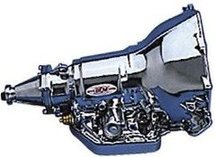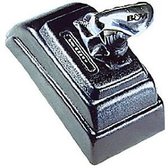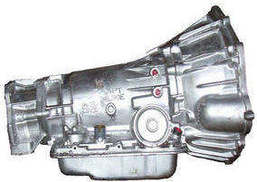Automatic Transmission Problems

Automatic transmission problems can be some of the most expensive repairs on today’s automobiles. In my 25 year career the entire automobile has advanced and gone through many changes.
The automatic transmission in my opinion has seen more changes than any other system on the automobile. Back in the 60s a two and three speed automatic transmission was all that you could get in any new car.
Today it is more common to have a six speed transmission or even a constant velocity transmission or CVT. What is amazing about modern units is that they use all of the advancements in automotive technology to improve operation.
Even though these advancements help improve drivability and efficiency they have not seemed to reduce automatic transmission problems. Internal malfunctions continue to be on the same level as they were in the previous years.
Automatic transmission history
Sidebar: In my day B&M was all the rage for those interested in high performance. They still offer shift kits and high performance automatic transmissions.
Automatic transmissions in the 80’s and 90’s relied on hydraulic controls to up shift the transmission. This upshift through the gears was controlled without a computer. The use of a governor and a throttle valve were the internal components that controlled the up shifting.
Although governors would fail and I would find in most cases it was either a seal or a stripped nylon gear this part was extremely reliable. Also the throttle valve was controlled by an adjustable steel cable. This provided direct input to the transmission on where the driver was as far throttle position, acceleration and engine load.

Wide open throttle would pull the cable tight and move the throttle valve into a position that would delay the up shift until the red line was reached.
Although these internal hydraulic controls and manual cables worked very well for upshift they were not very helpful in achieving maximum miles per gallon.
In the mid to late 80s when the computer was installed on board the vehicle they added a component known as a torque converter clutch.
This would lock up the transmission to a one-to-one ratio during the right conditions. In my opinion it was this advancement that has led to all of the electronics on today’s automatic transmissions.
Automatic transmission technology
Transmissions still use hydraulic pressure to perform up shift. Although this hydraulic pressure is controlled in most cases by shift solenoids that are electronically operated. The internal clutches and bands look very similar to the ones used years ago but again they are controlled by solenoids and electronics.
Some vehicles use a separate transmission control module to control the internal activities. These dedicated computers will monitor onboard sensors that are used by other systems on the vehicle.

For example instead of using a throttle valve cable to determine throttle position why not use the TPS (throttle position sensor). Other sensors can help determine engine loads such as the map sensor which stands for manifold absolute pressure.
This sensor uses vacuum to accurately determine engine loads. The transmission control module will monitor many other sensors depending on the manufacturer and the specific transmission.
The TCM frequently reviews the input information and can make very fast adjustments to the shift schedule and current gear ratio applied to the vehicle’s drivetrain.
An advantage of this automotive technology is that the transmission can adapt and change the behavior in response to the operating conditions and the habits of the driver. This also allows on the fly adjustments to compensate for internal wear. The transmission control module can actually adjust the line pressure and boost it to compensate for these wearing components inside the transmission.
Transmission problems
As mentioned above many internal components look the same as they did in the 1960s. But the electronics used to control these internal components are cutting-edge. Now when it comes to automatic transmission problems the electronics side of the equation must be evaluated.
Fortunately the transmission control module will store trouble codes just as the main computer does for the emissions system. The set trouble codes can help diagnose both electronic and internal problems. For example if the vehicle sets a code for a second gear shift solenoid this will give you a clear path of diagnosis.
Some mechanics say that regular transmission maintenance and keeping the fluid clean is more important today because of all of these electronic controls. I do believe in following the recommended automatic transmission fluid maintenance schedule as recommended by the manufacturer. But keep in mind that in most cases if you are having a serious malfunction changing the fluid will not help the transmission problem.

